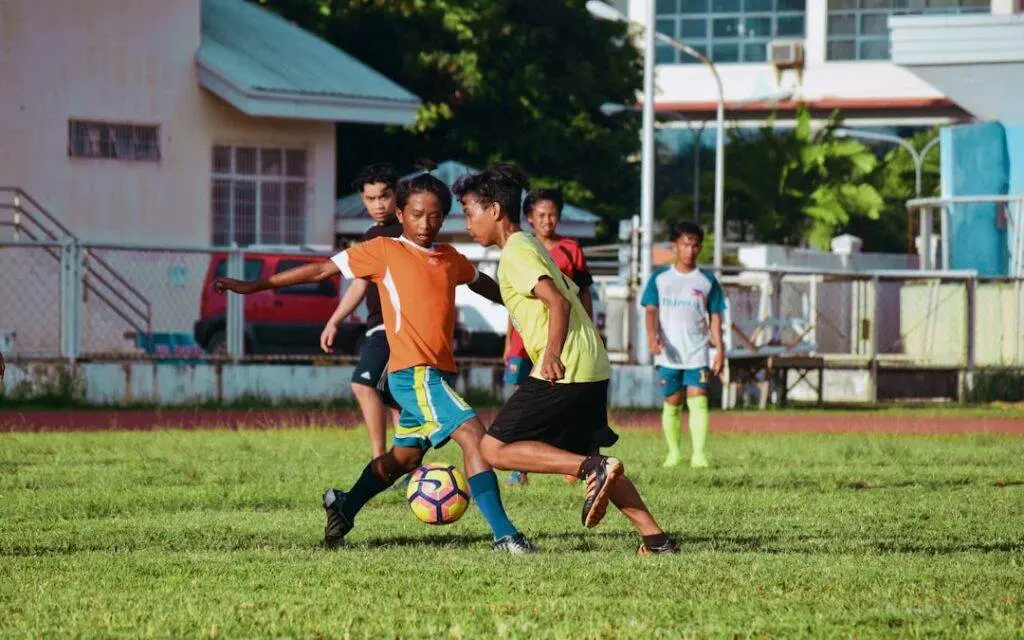The 3-5-2 formation is a tactical system used in football that consists of three defenders, five midfielders, and two forwards. It is a versatile formation that gives teams a strong presence in attack and defense. Formations play a crucial role in football as they determine how players are positioned on the field and how they interact with each other. The 3-5-2 formation has gained popularity recently due to its flexibility and effectiveness.
History of the 3-5-2 Formation in Football
The origin of the 3-5-2 formation can be traced back to the 1960s in Brazil. The Brazilian national team, led by coach Vicente Feola, used this formation during the 1962 FIFA World Cup. The team succeeded with this system, winning the tournament with players like Garrincha and Pele leading the attack.
Over the years, several teams have successfully used the 3-5-2 formation. Italian clubs such as AC Milan and Juventus have been known to implement this system effectively. AC Milan, under coach Arrigo Sacchi, used the 3-5-2 formation to great success in the late 1980s and early 1990s, winning multiple Serie A titles and European Cups.
The 3-5-2 formation has evolved to adapt to modern football tactics. Coaches have adjusted to suit their team’s style of play and take advantage of their players’ strengths. The formation has become more flexible, allowing teams to switch between shapes during game phases.
Advantages of the 3-5-2 Formation
One of the main advantages of the 3-5-2 formation is its flexibility in attack and defense. The three central defenders provide a solid defensive base, while the five midfielders can control the midfield and support the defense and attack. The two forwards can work together to create scoring opportunities and pressure the opposing defense.
The 3-5-2 formation allows teams to have a strong presence in the midfield. With five midfielders, teams can outnumber their opponents in this pitch area, making winning possession and controlling the game easier. The midfielders can also support the defense and contribute to the attack by creating scoring opportunities.
Another advantage of the 3-5-2 formation is the effective use of wing-backs. The wing-backs are crucial in this system, providing width in attack and defensive cover on the flanks. They are free to push forward and join the attack while also being responsible for tracking back and defending when necessary.
The 3-5-2 formation suits teams with strong central midfielders and strikers. The two central midfielders can dominate the midfield and dictate the game’s tempo, while the two forwards can form a partnership and create scoring opportunities for each other. This formation allows these key players to thrive and significantly impact the game.
Key Roles and Responsibilities in the 3-5-2 Formation
Position
Key Roles and Responsibilities
Goalkeeper
Organize the defense, communicate with the backline, make saves, and distribute the ball.
Center Backs
Defend the central areas, win aerial duels, intercept passes, and start attacks with accurate passes.
Wing Backs
Provide width in attack, overlap the wingers, track back to defend, and cross the ball into the box.
Defensive Midfielders
Protect the backline, break up opposition attacks, distribute the ball to the attackers, cover for the wing-backs
Central Midfielders
Control the tempo of the game, link defense and attack, create chances for the forwards, track back to defend
Wingers
Take on defenders, create chances for the forwards, track back to defend, and score goals.
Forwards
Score goals, hold up the ball, create space for the wingers, and press the opposition defenders.
In the 3-5-2 formation, each position has specific roles and responsibilities contributing to the team’s overall success. The three central defenders maintain a solid defensive line and prevent the opposing team from scoring. They need to communicate effectively with each other and provide cover for one another.
The five midfielders in the 3-5-2 formation have different roles depending on their position. The two central midfielders control the game, win possession, and distribute the ball effectively. They need to have good passing ability, vision, and tactical awareness.
The wing-backs in the 3-5-2 formation are crucial in attack and defense. They must provide width in attack and make overlapping runs to create scoring opportunities. Defensively, they need to track back and cover the central defenders. Wing-backs need to have good stamina, crossing ability, and defensive awareness.
The two forwards in the 3-5-2 formation must work together as a partnership. They must create scoring opportunities for each other, make intelligent runs, and pressure the opposing defense. They must also contribute defensively by pressing the opposition and disrupting their build-up play.
Communication and teamwork are essential in the 3-5-2 formation. Players need to constantly communicate with each other, provide support, and coordinate their movements on the field. This formation requires a high level of understanding between players and a strong team spirit.
Tactical Analysis of the 3-5-2 Formation
The 3-5-2 formation works differently in different phases of the game. In attack, the wing-backs provide width and create crossing opportunities, while the central midfielders control the game and create scoring chances. The two forwards work together to create space and score goals.
In defense, the three central defenders form a solid defensive line and provide cover for each other. The wing-backs track back and provide defensive cover on the flanks. The central midfielders drop back to support the defense and prevent the opposing team from creating scoring opportunities.
The 3-5-2 formation has several strengths. It allows teams to control the midfield and dominate possession. The wing-backs provide width in attack and defensive cover on the flanks. The two forwards can form a partnership and create scoring opportunities for each other.
However, there are also weaknesses in the 3-5-2 formation. It can be vulnerable to counter-attacks, especially if the wing-backs are out of position. The formation also relies heavily on the wing-backs to provide width in attack, which can be problematic if they are ineffective. The 3-5-2 formation may also struggle to adapt to different opponents and their tactical setups.
There have been several successful implementations of the 3-5-2 formation in professional football. Teams like Atletico Madrid, Juventus, and Napoli have used this formation effectively to achieve success. These teams have adapted the formation to suit their style of play and have had players who excel in key positions.
How to Implement the 3-5-2 Formation in Your Team
Implementing the 3-5-2 formation in your team requires careful planning and preparation. Here are some steps to take when introducing the formation:
1. Assess your player’s strengths and weaknesses: Determine if your team has the right players for each position in the 3-5-2 formation. Look for players with good passing ability, tactical awareness, and defensive skills.
2. Train and practice: Spend time on the training ground working on each position’s specific roles and responsibilities in the 3-5-2 formation. Focus on communication, teamwork, and understanding between players.
3. Start with small-sided games: Begin by playing small-sided games to allow your players to get used to the new formation. This will help them understand their roles and responsibilities and how they should interact with each other.
4. Analyse and adjust: Continuously analyze your team’s performance in the 3-5-2 formation and make adjustments as necessary. Pay attention to areas that need improvement and work on them during training sessions.
There are also common mistakes to avoid when implementing the 3-5-2 formation. One mistake is not having the right players for each position. It is important to have players who are comfortable and capable of playing in the specific roles required by the formation. Another mistake is not providing enough training and practice time for the players to understand and adapt to the new formation. It takes time for players to understand their roles and responsibilities in the 3-5-2 formation, so patience is key.
Success Stories of Teams Using the 3-5-2 Formation
Several teams have achieved success using the 3-5-2 formation. Atletico Madrid, under coach Diego Simeone, has used this formation effectively to win La Liga and reach the UEFA Champions League final. Simeone’s team is known for its strong defensive organization and disciplined approach, which is well-suited to the 3-5-2 formation.
Juventus, under coach Antonio Conte, also had success with the 3-5-2 formation. Conte implemented a high-intensity pressing game and used wing-backs to provide width in attack. Juventus won multiple Serie A titles and reached the UEFA Champions League final during Conte’s tenure.
Napoli, under coach Maurizio Sarri, has been another team that has used the 3-5-2 formation effectively. Sarris’s team plays an attacking style of football, with quick passing and movement. The wing-backs provide width in attack, while the central midfielders control the game and create scoring opportunities.
These teams have succeeded by adapting the 3-5-2 formation to suit their style of play and taking advantage of their player’s strengths. They have also emphasized communication, teamwork, and understanding between players.
Potential Drawbacks of the 3-5-2 Formation
While the 3-5-2 formation has advantages, there are also potential drawbacks that teams must be aware of. One drawback is its vulnerability to counter-attacks. If the wing-backs are caught out of position, the opposing team can exploit the space left behind and create scoring opportunities.
Another potential drawback is the dependence on wing-backs to provide width in attack. If the wing-backs are ineffective in this role, the team may struggle to create scoring opportunities and become predictable in their attacking play.
The 3-5-2 formation can also be difficult to adapt to different opponents and their tactical setups. If the opposing team plays with wingers or uses a different formation, it may require adjustments and changes in tactics to counter their strengths.
How to Counter the 3-5-2 Formation as an Opposing Team
To counter the 3-5-2 formation as an opposing team, it is important to analyze the strengths and weaknesses of the formation and develop strategies to exploit them. Here are some strategies that can be effective:
1. Exploit the space behind the wing-backs: The wing-backs in the 3-5-2 formation often push forward to provide width in attack. Exploiting the space left behind by the wing-backs can create scoring opportunities on the counter-attack.
2. Press the central midfielders: The central midfielders in the 3-5-2 formation are crucial in controlling the game. Pressing and denying them time and space on the ball can disrupt their rhythm and prevent them from dictating the game’s tempo.
3. Isolate the forwards: The forwards in the 3-5-2 formation often work together as a partnership. Isolating and preventing them from combining effectively can limit their impact on the game.
Scouting and analysis are crucial when facing a team that uses the 3-5-2 formation. Understanding how they play and identifying their key players and tactics can help develop effective strategies to counter their strengths.
Future of the 3-5-2 Formation in Football Tactics
The 3-5-2 formation has the potential for further evolution and development in football tactics. As the game evolves, coaches will look for new ways to gain an advantage over their opponents. The 3-5-2 formation provides a solid foundation for teams to build upon and adapt to their style of play.
There is also a possibility that the 3-5-2 formation will become a more widely used formation in professional football. As teams look for ways to control the midfield and create scoring opportunities, the 3-5-2 formation offers a balanced approach that allows teams to have a strong presence in both attack and defense.
The 3-5-2 formation is a versatile and effective tactical system in football. It provides flexibility in attack and defense, allows teams to control the midfield, and effectively uses wing-backs. The formation has a long history in football, with several successful implementations by teams worldwide. While there are potential drawbacks and challenges in implementing and countering the 3-5-2 formation, it has the potential for further evolution and development in football tactics.
If you are a football enthusiast looking to explore different formations, you might be interested in the 3-5-2 formation. This tactical setup has gained popularity recently due to its versatility and ability to control the midfield. It provides a comprehensive breakdown of the formation’s strengths and weaknesses and notable teams successfully implementing it. Whether you’re a coach, player, or a curious fan, this article will enhance your understanding of the 3-5-2 formation.






